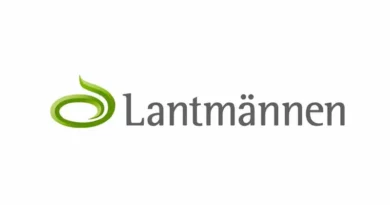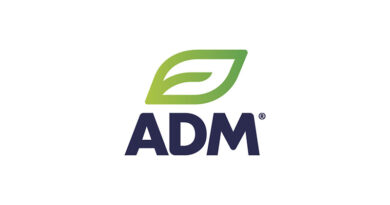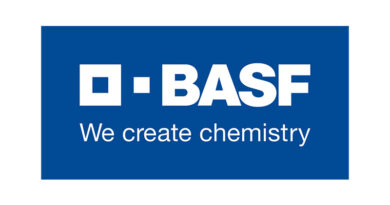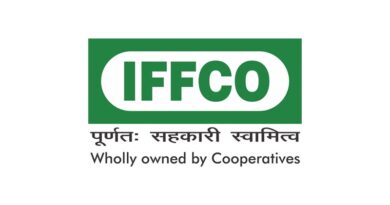Unlocking the Power of Open Innovation: A Blueprint for Business Growth
18 March 2024, Israel: ICL Group is taking the concept of open innovation to a new level and using its unique interpretation of the concept to supercharge business growth. ICL’s flagship Open Innovation Program is transforming research, effectively addressing traditional barriers, and facilitating a smoother transition from first concept to market realization.
Innovation can be broadly defined as the act of introducing something new. The two basic components of successful innovation are the ability to generate good ideas, and the ability – and willingness – to implement them on a practical level. The spirit of innovation has driven human development and ensured survival throughout history. Successful and healthy societies are generally innovative societies.
Businesses function as microcosms of the societies that they serve and innovation is integral to business survival and growth. Traditional models of innovation evolved around the belief that knowledge is an asset to be jealously guarded. A narrowly competitive and niche approach to business created an underlying cultural assumption that it was necessary to protect and monopolize new ideas and technologies.
Research and development occurred within corporate silos and a protective (and frequently inhibitive) culture of secrecy. In previous eras, this made perfect economic sense.
As we enter a new industrial revolution driven by transformative digital technologies, a new approach to innovation is rapidly becoming mainstream. Companies are suddenly becoming aware of the benefits of leveraging internal and external sources of new ideas and innovative technologies. The concept of open innovation, enabled by widespread open innovation initiatives between companies and third parties is transforming the pace, scale, and scope of innovation.
Much of the original impetus for open innovation came from original thinkers like the renowned academic Henry Chesbrough, whose seminal work Open Innovation created a foundation for a new approach to innovative solutions in high-tech business.
Companies like ICL are building on Chesbrough’s groundbreaking theories and adapting the concept of open innovation to their own business models. This radical new approach emphasizes collaboration towards achieving ambitious research and development goals, particularly within the field of sustainable innovation. Open innovation initiatives like the ICL Open Innovation Program are key to this vision.
The Driving Principles of Open Innovation
Open innovation represents a paradigm shift in how companies approach research and development, moving beyond the confines of in-house labs to embrace external ideas and collaborations. This strategy has become increasingly crucial in the fast-paced, interconnected world of Industry 4.0, where technological advancements and digital transformation are the norm.
Promoting innovation in this way isn’t always easy. It can require a sea change in the core corporate culture. Companies like ICL, which already have a flexible mindset and willingness to experiment and explore change, enjoy a major advantage when it comes to adopting innovative processes, particularly outside-in innovation.
Outside-in innovation (inbound innovation) represents the flow of external ideas and technologies into an organization. It is a key element of ICL’s innovation strategy that is enabling dynamic growth in several markets. The ICL Group has developed a bold approach to outside-in innovation, particularly through ICL Open and the Planet Startup Hub.
Both ICL Open and Planet are dynamic innovation spaces that systematically evaluate external innovation and connect game-changing technology companies and players to ICL teams.
ICL Open focuses on proof-of-concept collaborations for early-stage technologies. While the Planet Startup Hub identifies pilot-ready startups and market-ready technologies, providing direct investment to a tune of $5 million a year, and practical help taking products to market.
The Importance and Benefits of Open Innovation
Open innovation is helping transform the landscape of research and development, enabling companies to access a broader knowledge pool, accelerate the pace of innovation, and maintain a competitive edge in the global market. Every industrial revolution was characterized by sustained and game-changing technological progress and this era is not the exception.
There is not just an opportunity to identify new markets and consumer requirements for new products, but to streamline and optimize the entire spectrum of research and development, reduce time to market for new products, and to monetize unused assets through strategic partners and third parties.
ICL is highly proactive with the acquisition of knowledge and the development of partnerships with academics, existing hubs, and networks. The company also actively invites innovative solutions whenever it identifies unmet needs and gaps through a process similar to tendering for bids. The company will post a specific requirement or challenge to attract the attention of potential problem solvers.
Open innovation and the intelligent application of new technologies streamline R&D processes, and can significantly reduce overall costs. As product development cycles are shortened, teams can achieve a faster time to market. Resources – human, material, and financial – are freed up for allocation to other research and development projects. Put simply, in an efficient environment that produces innovative solutions, budgets go further and ROIs are higher.
A further benefit of open innovation is that it functions as a two-way street. In previous decades, and certainly during the 20th century, companies tended to hoard unused internal innovations. They basically sat on useful assets, either to deny them to competitors or because it simply didn’t occur to anybody to monetize them. Companies that are actively promoting innovation are a lot better at identifying unused innovations and turning them into profit through third-party collaboration.
The Challenges and Complexities of Open Innovation
Navigating the landscape of intellectual property management is a pivotal aspect of promoting innovation within a multi-partner framework. This endeavor, while intricate and sometimes prolonged, fosters a rich environment for collaboration and mutual growth. While it’s true that contractual negotiations can be intricate and sometimes lengthy, they are also a crucible for innovation and mutual understanding.
The path to achieving licensing or option agreements that satisfy all parties involved is indeed marked by challenges, but each hurdle overcome is a step towards a more innovative and cooperative future. Though the process may extend over several months, or in more complex cases, even longer, this thorough vetting and negotiation underscore a commitment to quality and mutual benefit. ICL’s approach to innovation ensures that, once technology is licensed, the quality of collaboration and the teams involved is of the highest standard.
The wider process of scouting and identifying promising new technologies, applying due diligence, and completing contractual negotiations takes time. Five years from start to finish is a realistic minimum scenario, but the process can take much longer. An important challenge is that innovators can’t predict the future with any degree of certainty. The pace of technological evolution is currently breathtaking.
A technology that looks like a good investment today, may be overtaken by landscape changes by the time it is licensed. Programs promoting innovation need to adopt a portfolio approach to projects in the expectation that some good concepts won’t be relevant by the time they have passed through the initial funnel. The balanced portfolio or hedging approach aims to maintain a competitive advantage and mitigate any unripened investments.
For younger stakeholders who grew up in a one-click culture, the timescales involved can be frustrating. On the plus side, they are usually better at integrating external ideas that lead to innovative solutions. Participants whose careers began in the 20th century are thrilled by the overall speed of the journey – and are delighted whenever an innovation can shorten it.
The ICL Open Innovation Program
The ICL Innovation Program is truly groundbreaking. ICL Open Space Leader, Mr. ZIv Kohav defines it as:
“An innovation space where we collaborate with startups and academic partners on proof-of-concept collaborations for early-stage technologies. We search for novel technologies and establish whether they fit us, or if they need some tailoring or adaptation. Then we implement exhaustive proof of concept collaborations, before moving on to further development stages.”
ICL’s open innovation initiatives begin with a list of unmet needs or market demands in the group’s current and projected future markets. When a possible solution is identified, usually proposed by a startup or someone in academia, a ‘meeting of minds” takes place to discuss the technology. The requirement is to establish how well it matches ICL innovation requirements and to what extent it needs to be adapted.
After technological due diligence, the concept is placed before an executive committee that decides whether to proceed and to allocate funding. If the project is approved, and the contractual negotiations are successful, the project is assigned to a business unit. Most of the actual work will be completed by the external partner, using their own facilities, but it’s vital for ICL to steer the project and oversee the fiscal aspects.
One example of a successful project is a new product that prevents harmful bacterial biofilms. The traditional solution is to use biocides, which are also potentially harmful and face tough regulatory barriers. An ICL scout identified a research paper by Professor David Davis from Binghamton University in the US that identified a new signaling molecule that also disrupted biofilms but is entirely benign. Following an exploratory meeting in the US, ICL realized the potential of using such a signaling molecule as part of its product portfolio to combat biofilm formation in industrial water. The discovery led to a formal collaboration, licensing, and ultimately a new product.
ICL’s Five Innovation Domains
ICL currently has 5 innovation domains that align with its open innovation strategy. The domains give some insight into the scale and diversity of ICL’s wider operations.
- Next Generation Fertilization
ICL is a major producer of fertilizers and is keen to identify new technologies for advanced crop nutrition, such as next-generation fertilizers, biostimulants, and related technologies. We are seeking solutions for:
- Enhanced Efficiency Fertilizers
- Biostimulants
- Biodegradable CRF Coating
- Nitrogen Fixation
- Organic and complex Fertilizers
- Secondary Nutrient Sources
- Delivery Platform
- Distributed Ammonia Production
- Nutrient Use Efficiency
- Prebiotics & Probiotics
- Food Tech
ICL is interested in joining forces with entrepreneurs and multinational food companies to deliver functional ingredients for food that will improve the quality of the food we eat. We are exploring options for
- Functional Ingredients
- Clean label alternatives
- Alternative proteins
- Natural antioxidants
- Natural texturants
- Natural pH control
- Plant-based protein, and innovative substitutes (at scale)
- e-Mobility and Sustainability
The Group is always ready to explore new chemistries, technologies, materials, and recycling technologies for batteries, particularly for the lithium battery market.
Simultaneously, ICL is dedicated to exploring advanced technologies and solutions that enhance the safety and extend the lifespan of energy storage systems. This includes pioneering innovative methods for utilizing minerals and transforming them into a broad array of safer and more sustainable applications. We are looking for innovative approaches to solve the following challenges:
- Cathode material for LMFP batteries
- LiPF6-related technologies
- Electrolytes and additives for batteries
- Zinc Bromine flow cells
- Sodium-ion battery materials
- Li-ion battery recycling
- Lithium extraction
- Novel Materials
ICL is actively promoting innovation in the field of novel materials for a variety of applications with a focus on bromine chemistry and phosphorus chemistries. We are scouting for solutions for:
Flame retardants
- Hal Free FRs for non-epoxy PCB
- FRs for Nylon & PBT with V0 and high CTI > 600 – 1,000
- Non-Hal FRs for ABS
- FRs and EMI-shielding additives for reinforced Polyolefin-based battery case
- Lowest water-soluble FR additive for intumescent coatings
Fertilizers
- Industrial applications of Polyhalite
- Potash production increase
- New applications for P2O5 chain
- Novel industrial applications for Br and P chemistries
Other Applications
- Defoamer for high gloss water-based paints
- Eliminating biofilm in industrial water systems
- Digital Agriculture
ICL is leveraging the intersection of big data and agricultural megatrends, equipping farmers with AI-enhanced tools for agronomic decision-making. This approach improves visibility throughout the value chain, fosters sustainability, and aims to minimize waste. We are searching for ways to improve:
- AI-powered agronomic decision-making
- supply chain traceability solutions
- curating and structuring data platforms
- leveraging data into sustainability
Strategies for Implementing Open Innovation
Since Open ICL has been scouting and tendering for innovative solutions from third parties, the team has gained some important insights into developing strategies for implementing innovation.
The most important fundamental is that a successful collaboration is a win-win situation for both parties.
The second fundamental is the ability to see the wider potential of an original concept or idea. Mr. Ziv Kohav expands on the need to think out of the box and not be dismissive of ideas that don’t immediately match an unmet need or market requirement.
“Just as an example, a company could be in plant protection products and we are not in plant protection, we are in plant nutrition. You could say there’s no basis for collaboration, but in fact some of the technologies that apply to plant protection can also apply to plant nutrition. So this could be the basis of a collaboration.”
It’s also important for startups, academics, and scouts to understand the criteria, which is facilitated by ICL’s approach of transparently publishing lists of unmet needs along with general or specific requirements. Mr. Kohav emphasizes the importance of recognizing ‘the fit,’ an aspect that, while not always immediately apparent, is key to successful collaborations.
“We’re immediately looking for the right fit. This includes the incredibly simple parameters of what we can and cannot do. For example, B2C business models won’t work for us in the food business, we are only working B2B. So if you’re coming to us and offering B2C technologies, there’s no way forward. You might have amazing disruptive technology, but it doesn’t mean that we can use it. Put yourself in our shoes and try to see what we can realistically work with.”
The Future of Open Innovation
Open innovation is breaking down a culture of information and asset hoarding and an insular approach to technology and R&D that is as old as commerce itself. Third-party collaboration and the active solicitation of innovative solutions for unmet needs are creating a completely new landscape with enormous opportunities for academics, researchers, and startup founders.
It’s also dramatically increasing the pace, scale, and scope of innovation. When this occurs in vital sectors like agriculture, food, and medicine the potential benefits for the entire human race are life-changing and life-enhancing. Goals like Zero Hunger, the elimination of disease, and green energy suddenly seem like they are in closer reach, rather than being future dreams. ICL is at the forefront of open innovation and is using it to help feed the world and implement sustainable clean energy.
Stay tuned for our next blog post featuring an in-depth interview with Ziv Kohav, ICL’s Open Innovation Lead, providing insights into ICL’s open innovation strategies and achievements as well as future goals, methodologies, and operational strategies.
Also Read: Protecting Basmati Rice: Punjab Bans 10 Insecticides with High Residue Levels
(For Latest Agriculture News & Updates, follow Krishak Jagat on Google News)















